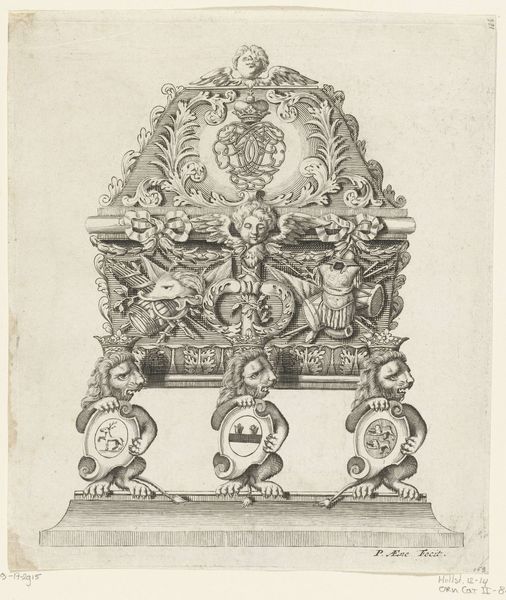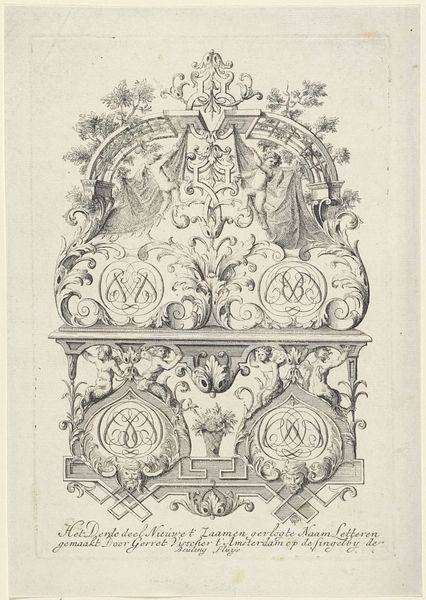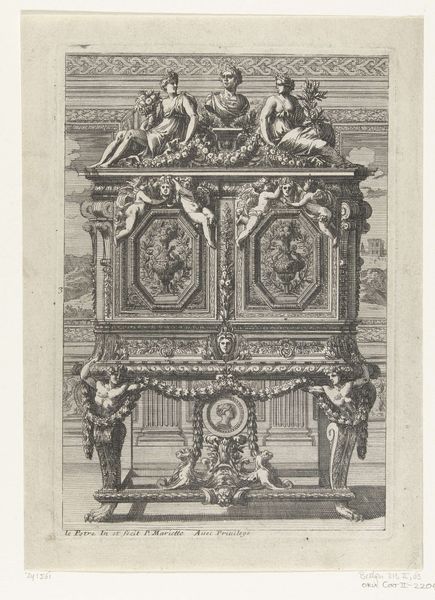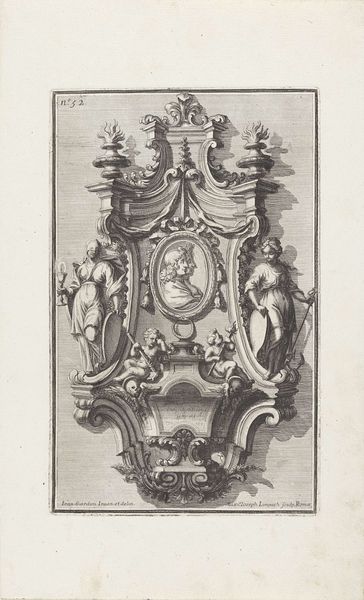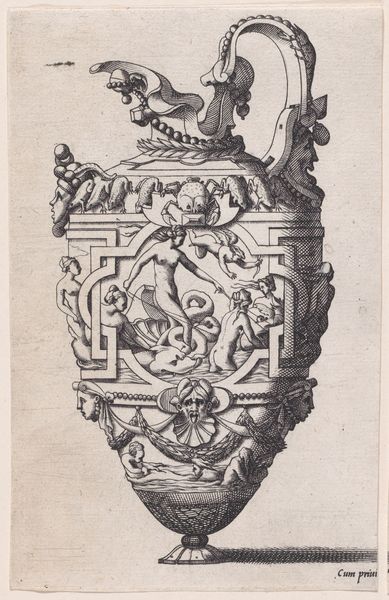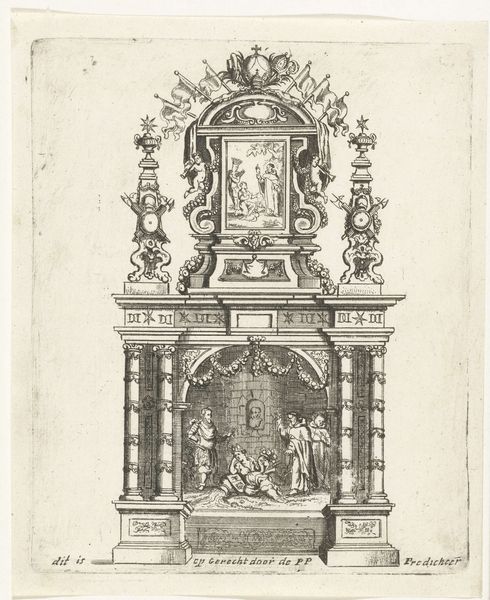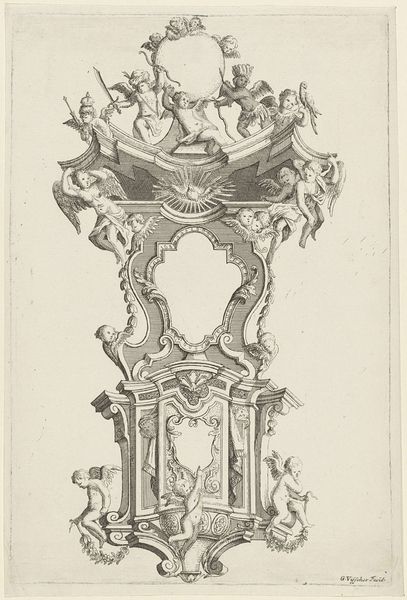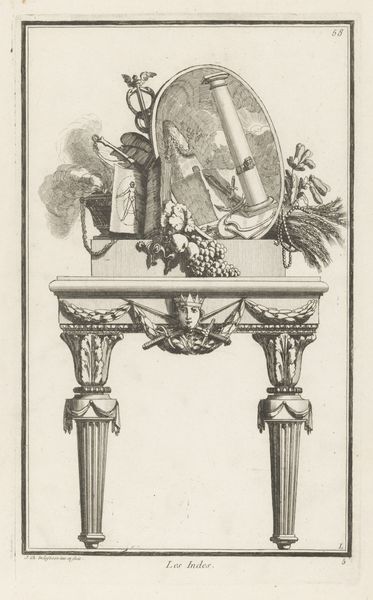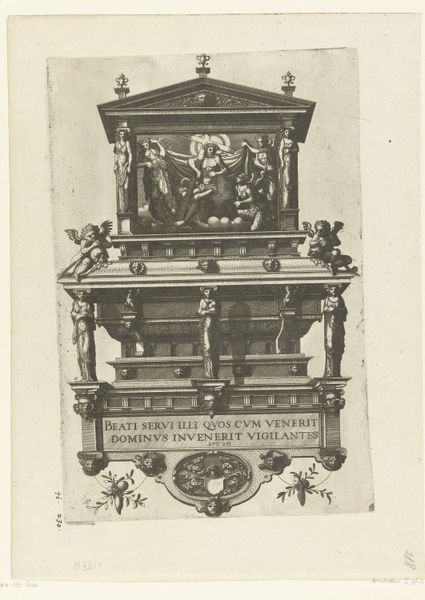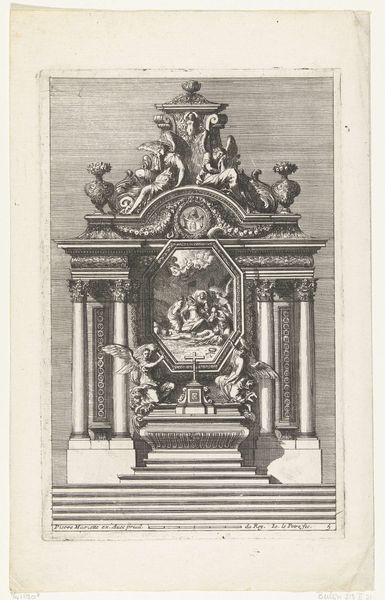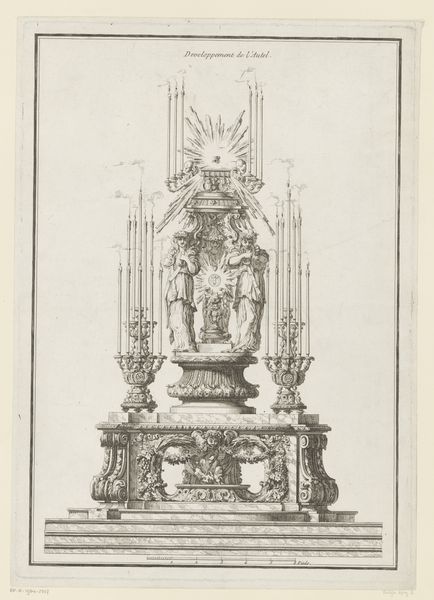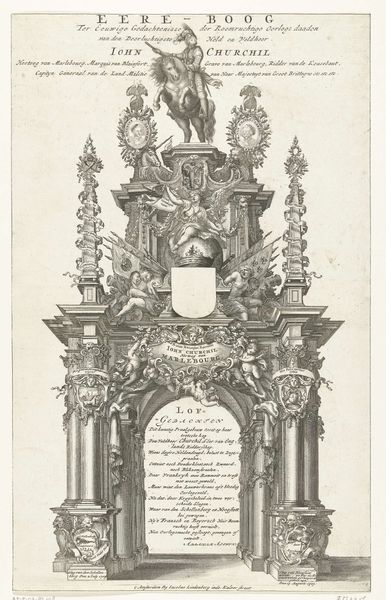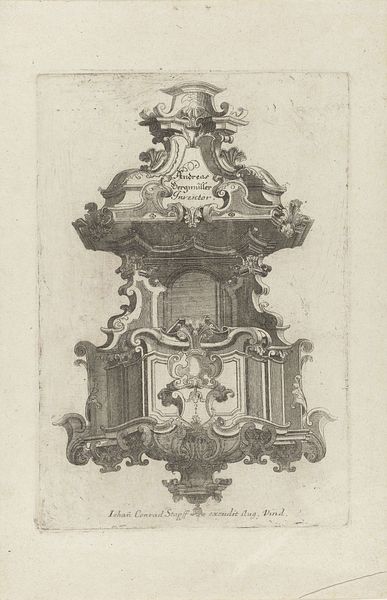
Sarcofaag van Hendrik Casimir II: hoofd gedecoreerd met wapentrofeëen 1680 - 1700
0:00
0:00
print, engraving
#
baroque
# print
#
old engraving style
#
history-painting
#
decorative-art
#
engraving
Dimensions: height 208 mm, width 170 mm
Copyright: Rijks Museum: Open Domain
Editor: Here we have a print from around 1680 to 1700, titled "Sarcofaag van Hendrik Casimir II: hoofd gedecoreerd met wapentrofeeën," or "Sarcophagus of Hendrik Casimir II: Head Decorated with Weapon Trophies." It’s an engraving by Petrus Aeneae. My first impression is the intense detail, there’s just so much to look at! How do you approach a work like this? Curator: Primarily, I look at the interplay of form and line. Notice the dense layering and ornamentation. Aeneae masterfully uses engraving techniques to create textures. Consider the strong diagonals created by the arrangement of military objects like cannons. Editor: I see what you mean, there is so much layering! It seems like every empty space has something filling it. The three lion figures at the base draw my eye because they look so different from the cherubs above. Curator: Precisely. The cherubic figures offer a contrast to the weightiness, don't you think? Their curving bodies redirect our gaze, lightening the overall somber theme, almost defying the constraints of the form of the sarcophagus itself. What do you make of the heraldic shields interspersed within the composition? Editor: They emphasize the identity and status of Hendrik Casimir II, definitely, like a visual declaration of power and lineage. The lions carry similar, smaller shields as well, connecting them to the main symbolic program of the engraving. I'd missed that initially. Curator: Precisely! This engraving exemplifies the power of formal composition. Line, texture, and arrangement all working together to create meaning. Editor: I see the interplay you mentioned. It’s interesting to think of the lines and shapes themselves as carrying meaning in addition to the images they portray. Curator: Yes, through this process of observation and analysis, one can extract layers of significance from its aesthetic components.
Comments
No comments
Be the first to comment and join the conversation on the ultimate creative platform.
